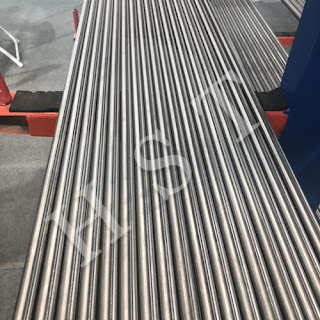1. Aviation
The largest user of titanium materials in the past and now is the aviation industry. Now titanium and titanium alloy materials are widely used in both military and civil aircraft, and the amount directly affects the rise and fall of the titanium industry. If the world economy enters a recession, it will directly respond In the world's aviation industry, there are fewer people traveling by plane, and the aviation industry of various countries is in decline, and there will be fewer aircraft orders and less titanium consumption. After the September 11 incident occurred in the United States in 2001, the world aviation industry had a short period of low ebb and short-term adjustments. As a result, the titanium industry also shrank for a period of time. At present, the United States is experiencing a storm of subprime debt, which has caused the economy to be in turmoil and again. During the period of slow recession, the world economy was also affected to a certain extent, but it is not yet clear how much impact it will have on the titanium industry. Titanium is mainly used in aircraft in the following places.
(1) It is the engine. The amount of titanium used in each engine accounts for 20-30% of the total weight of the engine. It is mainly the components of the compressor, including blades, hubs, inlet guide valves, and shells.
(2) It is the aircraft skeleton. Titanium is used in this area. Because of the high specific strength of titanium alloy, titanium is the first choice among all metal materials. Everyone knows that our country also needs to manufacture large aircraft, one of which is very important. The hardware is a large-tonnage forging machine. The largest titanium alloy dies forging machine in the world is currently 75,000 tons in Russia. Now a project has been established in Yanliang, Xi’an, and an 80,000-ton die forging machine is prepared. The first phase For the 40,000-ton project, the investment will be 195 million yuan and it will be put into operation at the end of 2009. The second-phase project will be 80,000-ton, and the investment will be 850 million yuan. What material is forged by these die forging machines? It is the aircraft frame made of titanium alloy. Especially the middle and rear sections of the rack. The middle section is the connecting section of the wing and the fuselage, which is the most stressed part of the frame, and the rear section is the installation part of the engine, which is also an important part of the force.
(3) Landing gear. Support frame, etc. Many aeroplane crashes are at the time of take-off and landing. Because the load and impact force of the aeroplane is very large when taking off and landing, the requirements on the landing gear are very high. The choice of titanium alloy not only guarantees the performance requirements of high strength and impact resistance but also is lighter than the choice of high-quality steel.
(4) It is the riveting parts for the wing skin and internal fixation. Some aircraft choose titanium as the wing skin, mainly some military aircraft. There are tens of thousands of rivets and fasteners on an aircraft. Our country produces cold There are three or four professional standard parts factories for hot rivets and fasteners. Their factories only produce various types of bolts, nuts and rivets, most of which are made of titanium and titanium alloy materials.
2. Medical applications
There are two main applications of titanium in medicine, one is pharmaceuticals, and the other is human implants.
(1) Application of titanium equipment in the pharmaceutical industry
In the pharmaceutical production process, the equipment is exposed to hydrochloric acid, nitric acid, acetic acid, sulfuric acid and its salts, and organic solvents and other media, causing serious corrosion of the equipment. If production is stopped frequently for maintenance, production will be affected, and the corrosion of equipment will directly affect the quality of medicines. Therefore, many pharmaceutical companies now use titanium materials for air drying devices, pipes, screw feeders, heaters, and cyclones in pharmaceutical equipment. On the one hand, the corrosion rate is only 0.008—0.003mm/a, and the most important thing is that It is ensured that the quality of the medicine will not be affected by the corrosion of the equipment.
(2) Application of titanium materials on the human body
Because titanium has higher strength, lower modulus, and good biocompatibility, it has now become a common medical substitute for human bones. Titanium is used to make hip joints, elbow joints, bone screws, knee joints, and bone plates. .Dental implants (that is, dental implants in dental hospitals, the price is very high), denture brackets, crown bridges, and orthodontic wires, surgical instruments, heart rhythm regulator boxes, etc. Even now it has developed into titanium alloy precision cast prostheses. Some children have irregular teeth and need to be corrected. The dental hospital will use memory alloy wires made of titanium-nickel alloy for correction. Some people have narrow blood vessels in a certain part, and doctors will recommend implanting blood vessels made of titanium. The stents can now be replaced with titanium materials from head to toe. There is a 68-year-old Peter Horton in the United States who has serious heart disease. In order to save his life, the doctor installed a titanium device in his heart. , To help his heart pump blood. He lived on this device for another seven and a half years, becoming the longest person living with an artificial heart. However, medical titanium materials are the most stringent and critical in terms of quality requirements, especially the metallographic requirements can be said to be the most stringent, higher than the military requirements. Neither can there be segregation at low magnification, and the structure of high magnification must be very uniform.

